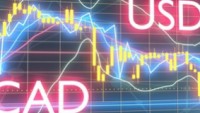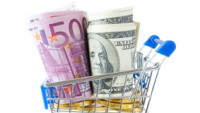 As suspected all the hyperbole leading up to this week’s informal OPEC meeting turned out to be pretty much just that as the Iranian oil minister holed any prospect of an agreement on a production freeze right below the Plimsoll line, sending oil prices sharply lower.
As suspected all the hyperbole leading up to this week’s informal OPEC meeting turned out to be pretty much just that as the Iranian oil minister holed any prospect of an agreement on a production freeze right below the Plimsoll line, sending oil prices sharply lower.
An agreement at today’s meeting was always an unlikely prospect in any case simply because for most of this year the Iranian line has been quite consistent in that they would only look at the prospect once oil production had got back to pre-sanction levels of 4m barrels a day. This was a view stated by Iranian oil minister Bijan Zanganeh as far back as March. With oil production in August at 3.6m barrels it is clear that Iran is still short of that and could well look to overshoot that number before considering the prospect again.
This is despite a rising willingness on the part of Saudi Arabia to arrive at a compromise, though this may have more to do with the fact that the war for market share is now starting to bite given yesterday’s announcement of wage cuts and salary freezes for senior Saudi officials.
Iran also wants to reintroduce a quota system that would give them about 13% of total production a similar level of output prior to the introduction of sanctions, which would on current production levels suggest a potential number nearer 4.5m barrels a day.
While oil prices slid back, weighing on energy stocks in the process, US markets shrugged off the slide, rallying strongly in the wake of the best monthly consumer confidence number in 9 years of 104.1, even though recent correlations between this and actual consumer spending patterns have been tenuous at best over the past few months.
Today’s durable goods numbers for August are likely to be a case in point, as these numbers have been persistently poor for over 12 months now. These are defined as ticket items like computers, flat screen TV’s, electrical appliances and the like, which if an economy is doing well tend to sell fairly well. So far this year we’ve seen two decent months, January and July while the expectation for today is expected to be a decline of 0.5%.
Markets in Europe had a rather different day yesterday, though they did manage to close off their lowest levels of the day, as US markets rebounded. The German DAX in particular came under pressure, closing lower for the third day in a row, as shares in Volkswagen, Commerzbank and Deutsche Bank came under pressure, though Deutsche Bank’s shares did manage a late rally after posting a three decade low of €10.20.
In the wake of last weeks Fed rate meeting all eyes and ears will be on today’s testimony by Fed Chair Janet Yellen to the financial services committee on Capitol Hill. Yesterday, her deputy Stanley Fischer, who has been more hawkish in recent comments struck a more modest tone in remarks to students, though he did express unease at very low level of interest rates, and suggested rates were set to go up soon.
While the testimony will be focussed on the Fed’s regulation of US banks, she will no doubt get asked questions about the Fed’s outlook on the economy and interest rates.
EURUSD – the euro appears to be consolidating between two converging trend lines with support at 1.1150 and resistance at the 1.1300 area. A break either side could well trigger a sharp 200 point move in either direction.
GBPUSD – the pound has managed to hold above the 1.2900 level for now, with a potential break targeting the July lows just below 1.2800. We need a rebound through the 1.3120 level to stabilise, and break the cycle of weakness.
EURGBP – we appear to have topped out again at the 0.8720 area, which suggests we could be susceptible to a break lower on a move through the 0.8600 level, for a test back to the 0.8480 area. A break through the 0.8730 area targets a potential move towards 0.8800.
USDJPY – continues to look weak with a retest of the 99.50 lows a distinct possibility. While below the 103.00 area the prospect of a move through 99.50 towards 96.00 remains.












